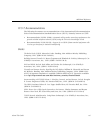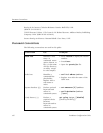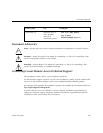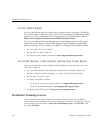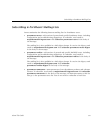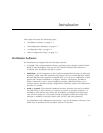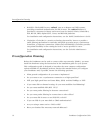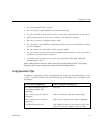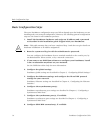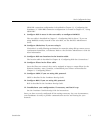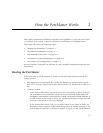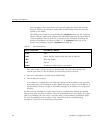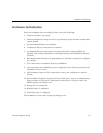
Preconfiguration Planning
1-2 PortMaster Configuration Guide
• RADIUS—The RADIUS server, radiusd, runs as a daemon on UNIX systems,
providing centralized authentication for dial-in users. The radiusd daemon is
provided to customers in binary and source form for SunOS, Solaris, Solaris/X8.6,
AIX, HP-UX, IRIX, Alpha OSF/1, Linux, and BSD/OS platforms.
For installation and configuration instructions, see the
RADIUS Administrator’s Guide.
• ChoiceNet—ChoiceNet is a security technology invented by Lucent to provide a
traffic filtering mechanism for networks using dial-up remote access, synchronous
leased-line, or Ethernet connections. When used with RADIUS, ChoiceNet provides
exceptional flexibility in fine-tuning the level of access provided to users.
For installation and configuration instructions, see the
ChoiceNet Administrator’s
Guide
.
Preconfiguration Planning
Before the PortMaster can be used to connect wide area networks (WANs), you must
install the hardware using the instructions in the installation guide for
your system.
This configuration guide is designed to introduce the most common configuration
options available for PortMaster products. Review this material before you configure
your PortMaster and, if possible, answer the following questions:
• What general configuration do you want to implement?
• Do you want to use a synchronous connection to a high-speed line?
• Will your high-speed lines use Frame Relay, ISDN, switched 56Kbps, or PPP?
• If you want dial-on-demand routing, do you want multiline load-balancing?
• Do you want multilink PPP (RFC 1717)?
• Do you want packet filtering for Internet connections?
• Do you want packet filtering for connections to other offices?
• Do you want dial-in users to use SLIP, PPP, or both?
• If you use PPP, do you want PAP or CHAP authentication?
• Are you using a name service—DNS or NIS?
• Have you obtained the necessary network addresses?




